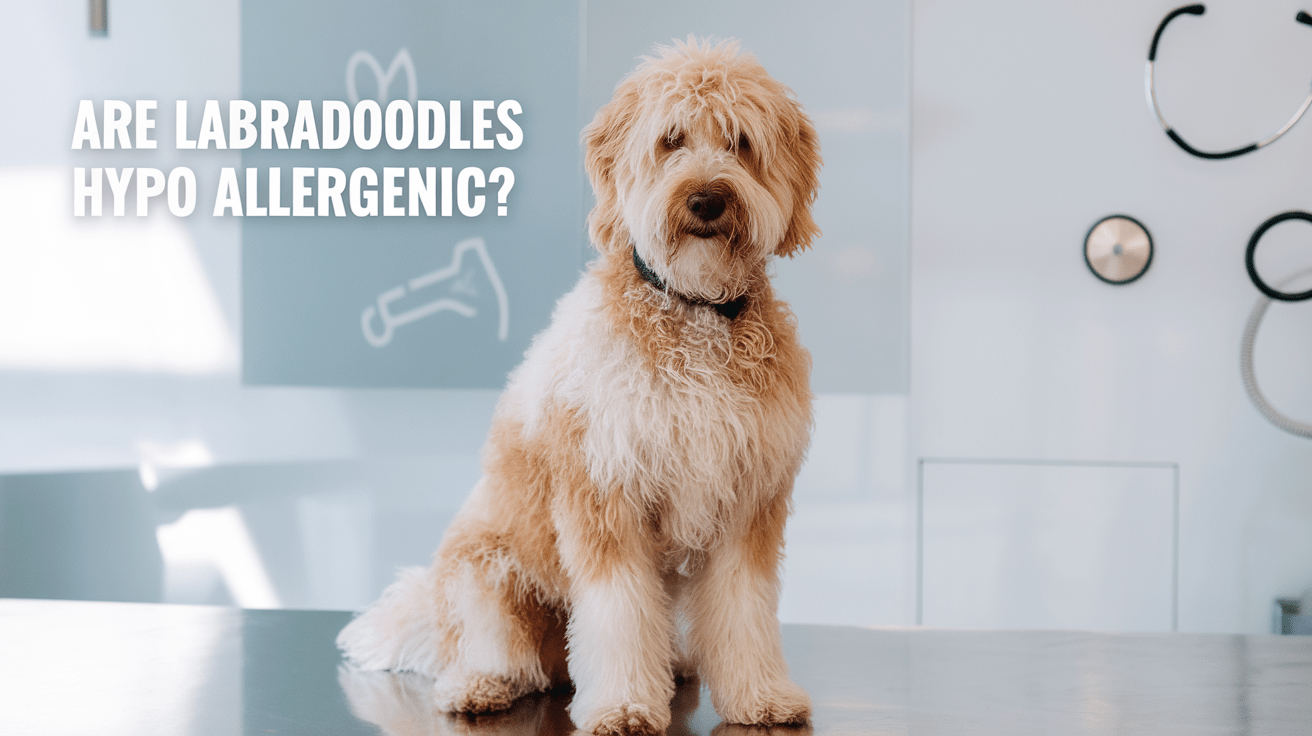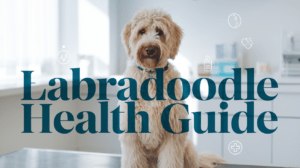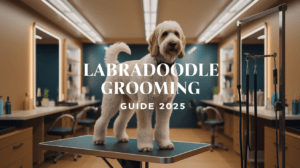Are Labradoodle Dogs Hypoallergenic Key Takeaways
- ✓ No Dog Is 100% Hypoallergenic: While Labradoodles can be allergy-friendly, no breed is completely allergen-free.
- ✓ Coat Type Matters: Wool and fleece coats are typically more allergy-friendly than hair coats in Labradoodles.
- ✓ Generation Impact: Multi-generation Labradoodles often have more predictable allergy-friendly characteristics than F1 generations.
- ✓ Regular Grooming Essential: Proper grooming and maintenance significantly reduce allergen levels in Labradoodles.
- ✓ Test Before Committing: Spend time with a specific Labradoodle before making a long-term commitment, as individual reactions vary.
Are Labradoodles hypoallergenic? As a veterinarian who’s treated countless Labradoodles over the past decade, I can tell you that the answer isn’t a simple yes or no. According to a study by the American Academy of Allergy, Asthma & Immunology, no dog breed is truly 100% hypoallergenic. However, here’s the good news: Labradoodles were specifically bred to be more allergy-friendly than many other breeds.
I remember when a tearful client brought in her Labradoodle puppy, convinced she’d have to rehome him due to her allergies. After implementing proper grooming techniques and understanding the unique characteristics of Labradoodle coats, she’s now living happily with her furry companion. Whether you’re considering a Labradoodle or already sharing your home with one, let’s dive into the real truth about these adorable teddy bear-like dogs and their relationship with allergies.
Understanding Hypoallergenic Dogs and Labradoodles
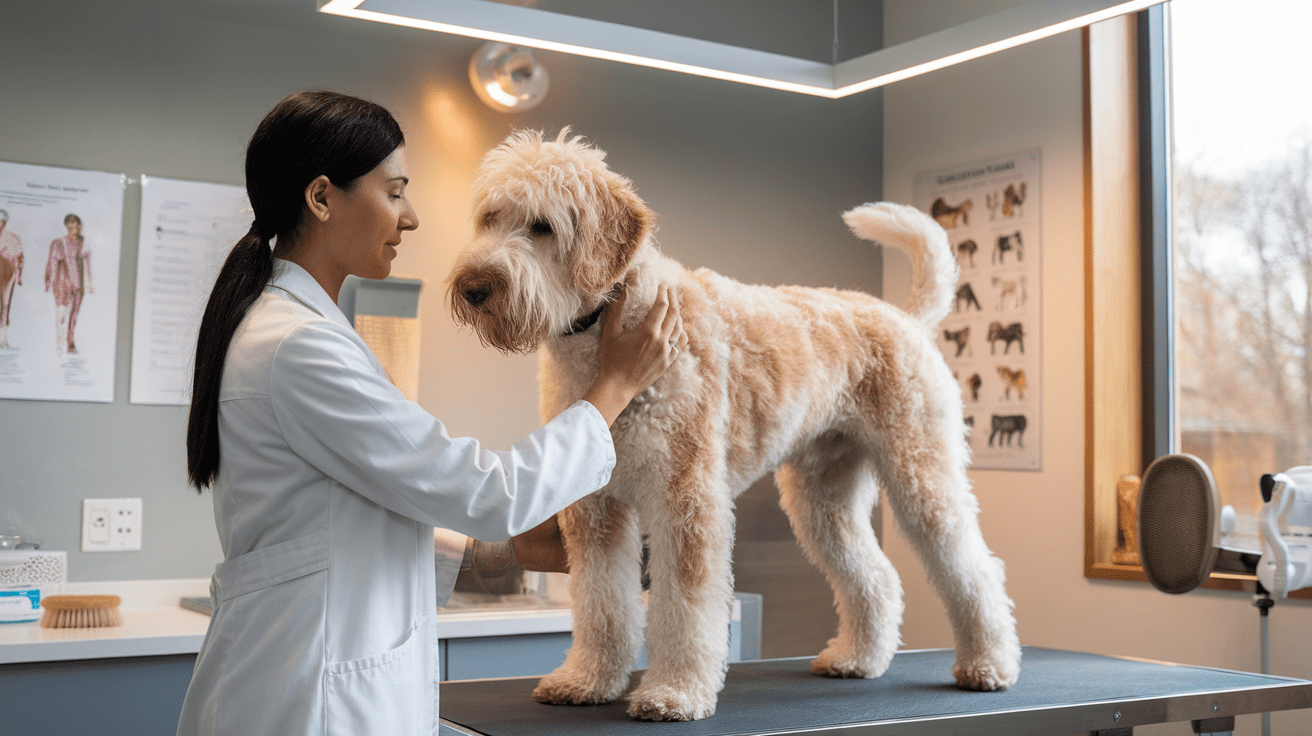
As a veterinarian who’s worked extensively with various dog breeds, I often get asked about hypoallergenic dogs. Let’s start by addressing a common misconception: the term “hypoallergenic” doesn’t mean “allergy-free.” Instead, it refers to dogs that are less likely to trigger allergic reactions.
Think of hypoallergenic traits like a rain jacket – while it won’t keep you completely dry in a downpour, it provides significant protection compared to wearing regular clothes. According to a study published in the Journal of Allergy and Clinical Immunology, even breeds marketed as hypoallergenic still produce allergens, though often in lower amounts.
What Makes a Dog Hypoallergenic?
Contrary to popular belief, dog allergies aren’t primarily triggered by fur. The main culprit is a protein called Can f 1, found in:
• Dog saliva• Urine
• Dander (dead skin cells)
The Origin of Labradoodles as Allergy-Friendly Dogs
The Labradoodle’s story began in 1988 when Wally Conron, breeding manager at the Royal Guide Dogs Association of Australia, received an unusual request. A blind woman needed a guide dog, but her husband was allergic to dog fur. His solution? Crossing a Labrador Retriever with a Standard Poodle, creating what would become the first Labradoodle.
Different Types of Labradoodle Coats and Their Impact on Allergies
In my practice, I’ve observed three main coat types in Labradoodles:
• Wool coat: Most similar to a Poodle’s coat, typically best for allergy sufferers• Fleece coat: Soft and wavy, moderately allergy-friendly
• Hair coat: More similar to a Labrador’s coat, less suitable for those with allergies
Last week, I treated a Labradoodle with a wool coat whose owner hadn’t experienced any allergic reactions in their five years together. However, her friend’s Labradoodle with a hair coat triggered her allergies significantly. This perfectly illustrates why understanding coat types is crucial when considering a Labradoodle as an allergy-friendly companion.
The Reality of Labradoodle Allergies
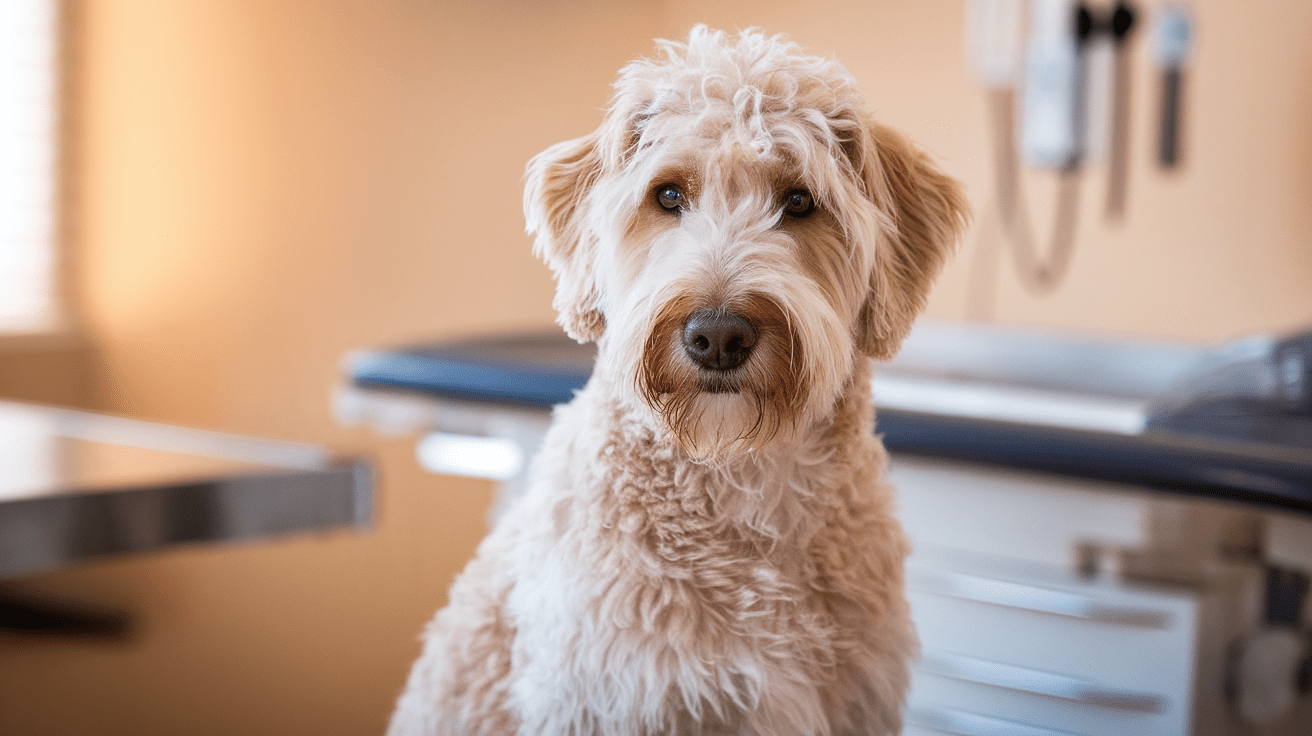
After treating hundreds of Labradoodles in my practice, I’ve learned that the relationship between these dogs and allergies is more complex than most people realize. According to a study in the Clinical & Experimental Allergy journal, even Labradoodles marketed as hypoallergenic can produce varying levels of allergens, with some producing as much as their non-hypoallergenic counterparts.
Are Labradoodles Truly Hypoallergenic?
The short answer is no – but that doesn’t tell the whole story. Think of Labradoodle allergen levels like a dimmer switch rather than an on/off button. Some Labradoodles might trigger minimal allergic reactions, while others could cause significant symptoms. Just last month, I worked with identical twin sisters who had very different reactions to the same Labradoodle puppy – one experienced no symptoms while the other had mild allergic responses.
Factors Affecting a Labradoodle’s Allergen Levels
Several key factors influence how likely a Labradoodle is to trigger allergies:
• Genetics: The stronger the Poodle genes, typically the more allergy-friendly• Individual protein production: Each dog produces different amounts of allergenic proteins
• Environmental factors: Stress, diet, and health can affect dander production
• Grooming habits: Regular maintenance significantly impacts allergen levels
Understanding F1, F2, and Multi-Generation Labradoodles
Through my years of practice, I’ve observed that understanding generations is crucial for allergy sufferers. Here’s a breakdown:
F1 Labradoodles (first generation) are 50% Labrador and 50% Poodle. They’re somewhat unpredictable regarding allergies. F2 Labradoodles come from two F1 parents, while Multi-generation Labradoodles typically have more consistent coat types and are often better for allergy sufferers. I recently treated an F1b Labradoodle (75% Poodle, 25% Labrador) whose allergy-sensitive owner hasn’t had a single reaction in three years.
Remember, even within the same generation, individual dogs can vary significantly in their allergen production. It’s always recommended to spend time with a specific Labradoodle before making a long-term commitment.
Managing Allergies with a Labradoodle
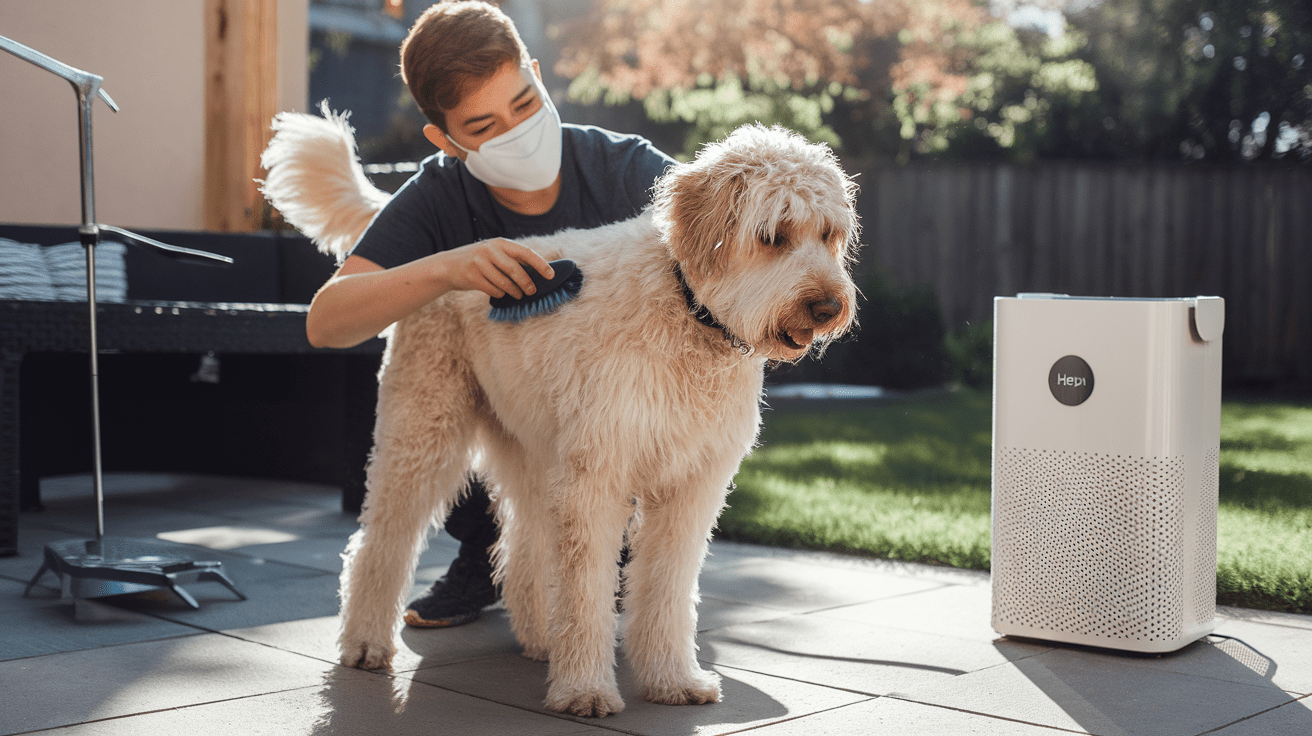
Living with allergies doesn’t mean you can’t enjoy life with a Labradoodle. According to a study in the Journal of Allergy and Clinical Immunology, implementing proper management strategies can reduce pet allergen exposure by up to 95%. In my practice, I’ve seen countless success stories of allergy sufferers thriving with their Labradoodles through proper management techniques.
Essential Grooming Practices to Reduce Allergens
Regular grooming is your first line of defense against allergens. Just last week, I saw a dramatic improvement in a client’s allergic reactions after implementing these essential practices:
• Regular brushing: Daily brushing outdoors to remove loose fur and dander• Professional grooming: Every 6-8 weeks to maintain coat health
• Bathing schedule: Monthly baths with hypoallergenic shampoo
• Face wiping: Daily cleaning to reduce saliva-based allergens
Tips for Allergy Sufferers Living with Labradoodles
Think of managing allergies like maintaining a clean home – it requires consistent effort but becomes second nature over time. Here are proven strategies I recommend to my clients:
• Create pet-free zones, especially in bedrooms• Use high-efficiency air purifiers
• Vacuum frequently with HEPA-filtered machines
• Wash your hands after petting or playing with your dog
One of my clients compared managing her allergies to “learning to dance with her Labradoodle” – it took some practice, but now they move together seamlessly. She maintains an allergy-friendly home while enjoying all the love her Labradoodle has to offer.
Alternative Hypoallergenic Dog Breeds to Consider
While Labradoodles can be wonderful companions, they’re not the only option for allergy sufferers. In my experience, these breeds often work well for those with allergies:
• Standard Poodles: Consistently low-shedding• Bichon Frises: Excellent for apartments
• Portuguese Water Dogs: Active and family-friendly
• Maltese: Small and gentle companions
Remember, what works for one person might not work for another. I always recommend spending significant time with any potential pet before making a commitment. The joy of finding the right match is worth the careful consideration and preparation.
Frequently Asked Questions About Hypoallergenic Labradoodles
Final Thoughts: Are Labradoodles Right for Allergy Sufferers?
While Labradoodles aren’t completely hypoallergenic, they can be an excellent choice for many allergy sufferers when the right precautions are taken. Success with a Labradoodle comes down to understanding their unique coat types, choosing the appropriate generation, and maintaining proper grooming practices. As a veterinarian, I’ve witnessed countless success stories of allergy sufferers living harmoniously with their Labradoodles through dedicated management strategies. Remember that every person’s allergic response is different, so it’s crucial to spend time with a specific Labradoodle before making a long-term commitment. Whether you choose a Labradoodle or another allergy-friendly breed, the key is finding the right balance between managing your allergies and enjoying the incredible companionship that dogs provide.
While considering a Labradoodle’s allergy-friendly qualities is important, it’s equally crucial to understand their potential health challenges. Our detailed Essential Guide: 15 Common Labradoodle Health Issues explores the key medical conditions these beloved dogs may face in 2024. From hip dysplasia to ear infections, being informed about these health concerns helps ensure you can provide the best possible care for your Labradoodle while managing any allergy considerations.

